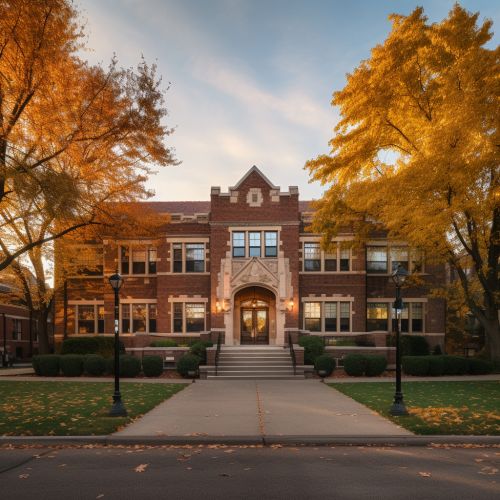Independent school (United States)
Overview
An independent school in the United States is a school that operates independently from government control or funding. These schools are primarily funded through tuition fees, donations, and endowments, rather than by taxes or public funds. They are governed by a board of trustees, rather than a public school board. They have the freedom to design their own curriculum and assessment systems, and are not obligated to follow the state curriculum.
History
The history of independent schools in the United States dates back to the colonial era. The first independent schools were established by religious groups and were intended to provide an education that was in line with their beliefs. Over time, these schools evolved and expanded to include non-religious independent schools. Today, there are thousands of independent schools across the country, serving students from pre-kindergarten through high school.
Governance
Independent schools are governed by a board of trustees. The board is responsible for the strategic direction of the school, financial oversight, and the hiring and evaluation of the head of school. The head of school is responsible for the day-to-day operations of the school, including the hiring of faculty and staff, curriculum development, and student admissions.
Funding
Independent schools are primarily funded through tuition fees, donations, and endowments. Tuition fees are the main source of revenue for most independent schools. These fees can vary widely, depending on the school's location, the level of instruction, and the school's reputation. Donations and endowments also play a significant role in the funding of independent schools. These funds are often used to support scholarships, faculty salaries, and facility improvements.
Curriculum
One of the key characteristics of independent schools is their ability to design their own curriculum. This allows them to tailor their educational programs to meet the needs of their students and to reflect the mission and values of the school. Independent schools are not obligated to follow the state curriculum, although many choose to do so. They also have the freedom to choose their own assessment systems, which can include standardized tests, portfolios, and performance assessments.
Admissions
Admissions processes at independent schools can be highly competitive, particularly at the high school level. Many independent schools require prospective students to submit an application, academic transcripts, teacher recommendations, and to participate in an interview. Some schools also require students to take an entrance exam, such as the SSAT or the ISEE. The admissions process is designed to ensure that the students who are admitted are a good fit for the school's mission and values.
Accreditation
Independent schools in the United States can choose to seek accreditation from a number of different organizations. The accreditation process involves a comprehensive review of the school's programs, faculty, governance, financial stability, and commitment to continuous improvement. Accreditation is not required, but it can provide a measure of assurance to parents and students that the school meets certain standards of quality.
Advantages and Disadvantages
There are several advantages to attending an independent school. These include smaller class sizes, more individualized attention, greater flexibility in curriculum design, and the ability to choose a school that aligns with a family's values or educational philosophy. However, there are also disadvantages, including high tuition costs, less diversity, and the potential for elitism.
See Also


